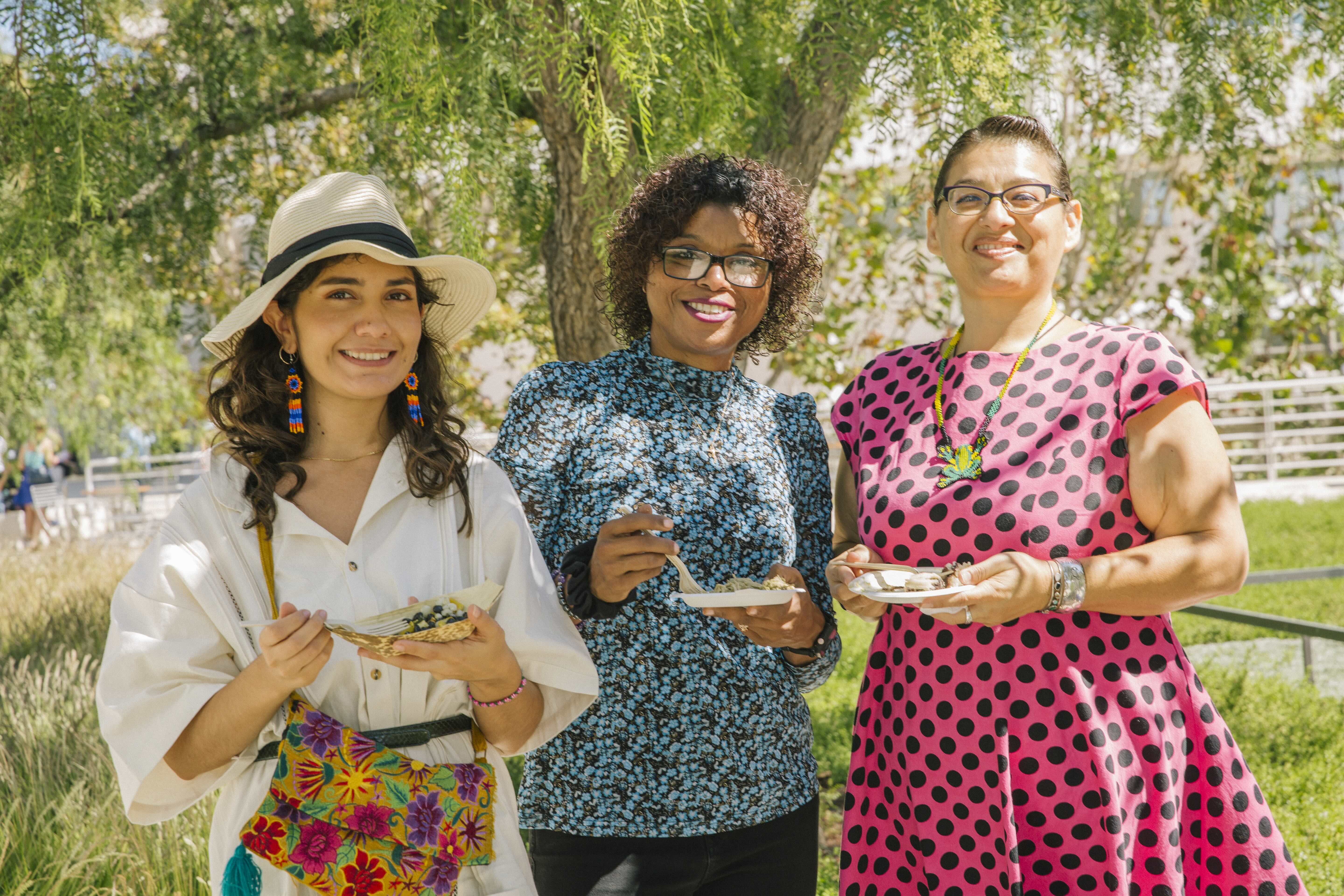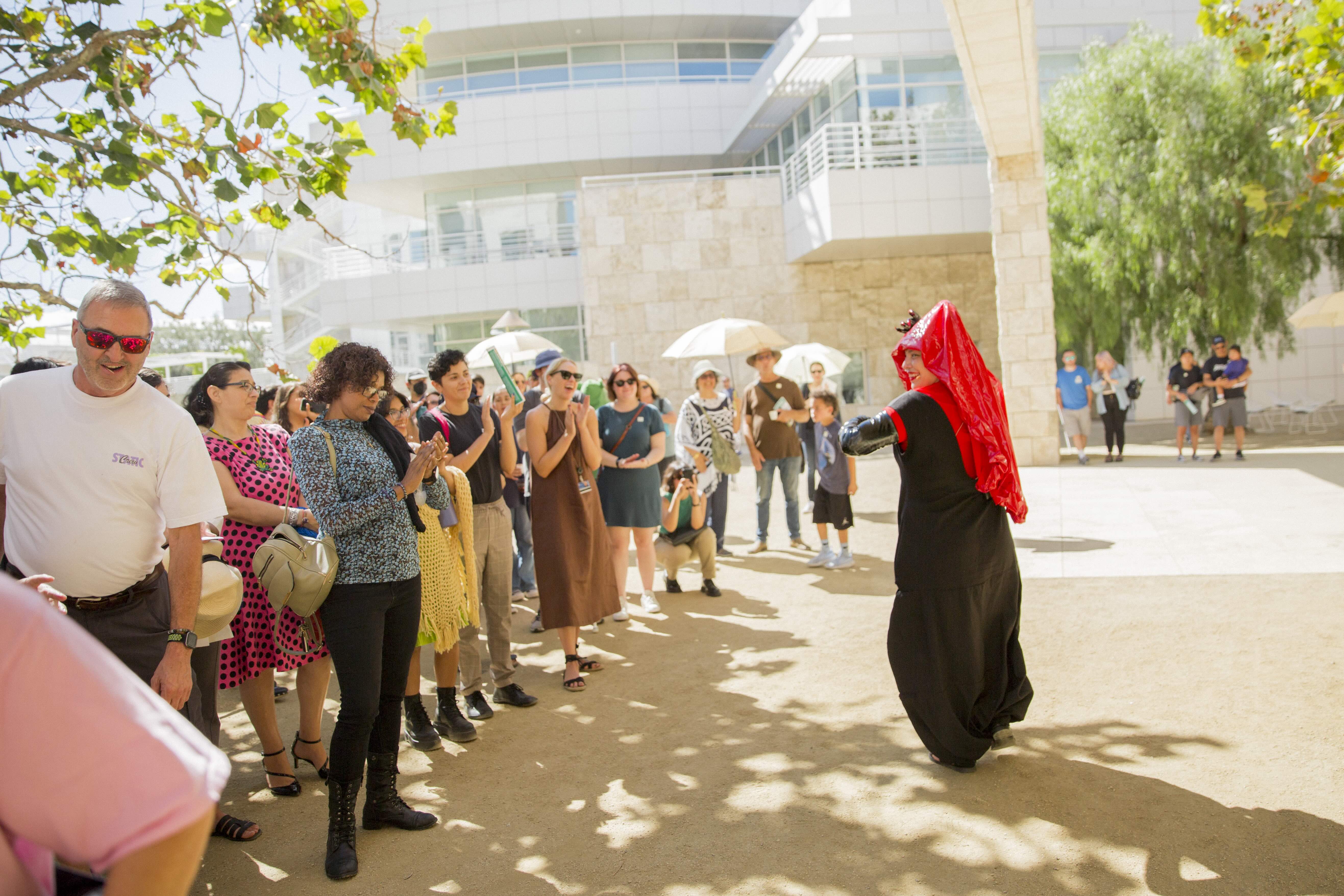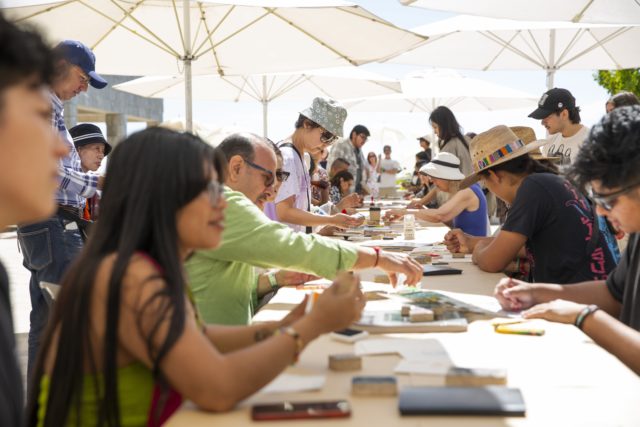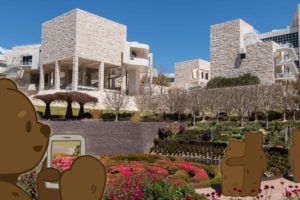This post was updated Oct. 20 at 11:31 a.m.
At the Getty Center, celebrating the diversity of Indigenous people is best represented through an array of art.
The Getty Center will host its third annual Celebrating Indigenous Peoples’ Day event Saturday. The event is set to highlight the work of Indigenous artists across several mediums and multiple Native American cultures, with this year’s theme centered around flora and native plants. Chelsea Anderson, the founder of the event and Getty Research Institute public programs specialist, said the upcoming festival has been a natural evolution of past versions of the celebration in response to guests’ previous enthusiasm.
“This event is organized in a very special way because it is really rooted in historical context and that sort of educational branch, which is really important to the Getty as an educational institution,” Anderson said. “But beyond that, it really celebrates contemporary voices and contemporary experiences.”
[Related: UCLA graduate student Abigail Alonso weaves Native American stories into animation]
Compared to previous years, Anderson said the festival has grown to incorporate poetry and will include activities that attempt to engage all five of attendees’ senses. Anderson added that a tasting menu, arts and crafts stations, poetry readings and film screenings are among the experiences to be included at the event. She said the food offerings will be primarily rooted in native plants such as pine nuts, mesquite, chia seeds and quinoa, with recipes taken from the cookbook “Cooking the Native Way: Chia Cafe Collective.” Likewise, a workshop where guests can make Tongva clapper sticks with Gabrielino artist and musician Lazaro Arvizu Jr. will be another way for attendees to learn more about traditional Indigenous instruments, Anderson added.

The Celebrating Indigenous Peoples’ Day event is meant to encourage conversations about the stories of Indigenous people and the work of Indigenous artists, Anderson said. Likewise, Anderson said the event reflects the Getty Center’s efforts to provide a platform to smaller artists within the Los Angeles community. One approach to accomplish this goal was to include links to websites of community partners on the event’s website to encourage education for people who might be unable to attend the celebration in person, Anderson said.
Anderson said the event was linked to an exhibition going on at the Getty Center the past two years and was attended by more than 1,000 people. Although the event is geared toward families, Anderson said it is important to note that the activities are designed to be educational for attendees of all ages. This year, Anderson said the theme of flora is being incorporated into the event’s program with artists interacting with the Getty’s Central Garden. Herb Club LA will be leading tours of the garden to introduce guests to some of the native species of plants found there, Anderson said. The contemplative nature of the gardens will complement the inclusion of poetry readings, she added.
William Ramírez, a public programs coordinator at the Getty Research Institute who was also involved in the planning of the event, said the event is important for the sake of challenging visitors’ perceptions of both the Getty Center and Indigenous culture, especially as more organizations begin to pay attention to Indigenous communities and their stories.
“Native artists exist in the present moment,” Ramírez said. “They are creating poetry, they’re creating film, music, and they should be celebrated for that.”

Cahuilla artist and poet Emily Clarke will be providing a 15-minute reading of her original poetry at the upcoming event. Clarke said most of the poems she will be featuring were written specifically for live performance and have yet to be published, and about half were written within the last month. Although her poems for performance differ from pieces she would only publish in writing, she said she writes often about the history of Indigenous people in California in order to reflect on the past while looking ahead to the future.
“I never want to only showcase work that talks about our pain or talks about historical trauma,” Clarke said. “I also want to showcase work that tries to counter that in the way of celebrating and talking about our people today and how far we’ve come.”
[Related: Getty Center’s College Night invites students to reexamine history through art]
Clarke also said it is important for the event to emphasize the history of creativity found within Indigenous communities. She said her own artistry extends beyond poetry to include traditional dance and beaded jewelry. Generations of Indigenous people have lived with art and creativity at the forefront of their culture, Clarke said. As important as the historical elements of Indigenous culture are, Clarke said expressing the contemporary experience of Indigenous people is equally important.
Based in the LA area, Clarke said the Cahuilla’s traditional homeland is in the mountains north of Palm Springs, California. She said she is eager to share some poems that have focused upon themes of land acknowledgement in order to express the Indigenous perspective on this widely adopted institutional practice. She said it is rewarding to be featured in an event at the Getty Center since the museum strives to recognize the multitude of perspectives and individuality of different Indigenous cultures and communities.
“A lot of people think, ‘If you’re Native, you’re Native,’ and you’re all one,” Clarke said. “The truth is, there are over a hundred tribes alone in California, and we’re all connected in a way, but we’re all very different people and we have different cultures and different traditions.”



Comments are closed.